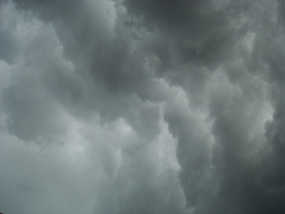Tampa Bay Hurricane Season 2023 | A Family Preparedness Guide
The sun-drenched state of Florida is well-known for its vibrant beaches, lush wildlife, and thrilling amusement parks. However, every resident also knows that with the sun comes the rain – specifically, the hurricane season that rolls around annually. When the Atlantic Hurricane Season strikes, and the Tampa Bay hurricane season 2023 is almost upon us, it is essential for every family to have a comprehensive disaster plan in place. In this guide, we’ll outline key steps to craft an effective family disaster plan for Florida’s hurricane season.

Understanding the Threat
Florida’s hurricane season lasts from June 1st to November 30th, with its peak being in August through September. During this period, residents may face storms ranging from Tropical Depressions to Category 5 Hurricanes. The kinds of effects this weather can produce include high winds and heavy rain, leading to potential flooding and even tornadoes. By studying a little about each of these threats, you’ll be able to further tailor your family’s plan to address every likely contingency.
Assembling Your Disaster Kit
A good disaster plan is incomplete without a well-stocked disaster kit. Your kit should include enough supplies to sustain your family for at least three days, including:
- Non-perishable food and water
- Medications and first aid supplies
- Important documents like passports, driver’s licenses, insurance papers, and medical records
- Batteries and flashlights
- Hygiene supplies
- Pet supplies, if you have pets
Don’t forget to check the expiry dates on perishable items regularly and replace them as needed.
Plan for Evacuation and Sheltering
In some circumstances, it might become necessary to evacuate your home to a relative’s house or to a hotel. When neither is possible, even to a local hurricane shelter. Don’t forget to consider your pets in this plan; not all shelters accept pets.
If evacuation is not advised or possible, designate a safe room in your home where your family can shelter during the storm. This should be a windowless, interior room on the ground floor.
Communication is Key
Even though we depend on our smartphones and chat apps for so much, these channels of communication may be hampered by power outages (remember to keep charged-up power banks ready) or even limited by infrastructure problems. So agree on an emergency communication plan with family and friends. You may also consider investing in a battery-operated or hand-crank radio to receive news updates.
Don’t Forget About Your Home
While ensuring your family’s safety is paramount, remember to take steps to protect your home as well. Secure doors and windows, trim trees near your house, and secure outdoor furniture and other objects that might become projectiles in strong winds.
Furthermore, review your homeowners or renters insurance to ensure you have adequate coverage for possible hurricane damages. Flood damage, for instance, is often not covered by regular policies and requires additional coverage.
Health and Safety
Remember that the danger doesn’t always end when the storm does. Floodwater can pose a significant health risk due to contamination, and the risk of injury from debris is high. As part of your disaster plan, have a first aid kit ready, keep emergency numbers at hand, and remember to boil or purify water if you’re unsure of its safety post-hurricane.
After the Storm
After a hurricane, the recovery phase begins. Continue to stay informed about the situation via local news or emergency broadcasts. Only when authorities have confirmed that it is safe to do so, you can inspect your home for damage and report any issues to your insurance company.
Education and Practice
Once created, a preparedness plan must be rehearsed. So when your family disaster plan is complete, ensure everyone in the family understands it first. Sit down together to discuss the plan, especially with younger children who may not fully comprehend the situation. Explain why you’re preparing and what each person’s role is. Make sure all family members know where the disaster kit is stored and what it contains.
Conduct regular drills to ensure everyone knows exactly what to do in case of a hurricane warning or if evacuation becomes necessary. Familiarity with the plan will help reduce anxiety and confusion when a hurricane strikes. In the words of Benjamin Franklin, “By failing to prepare, you are preparing to fail.”
Stay Informed
It is common after researching and preparing for a situation to then let one’s guard down. In the case of hurricanes however, it’s important to keep up to date with the latest accurate information. The National Hurricane Center and local news outlets are excellent sources for real-time weather updates and evacuation orders.
Invest in a weather radio, subscribe to local news and weather alerts, or download weather tracking apps. Remember that the terminology used can be confusing at times; for example, a “hurricane watch” refers to such conditions being possible in one’s area within 48 hours, while a “hurricane warning” refers to one actually being expected within 36 hours.
In conclusion, creating a family disaster plan for the Florida hurricane season is a wise and essential idea. First understand the threat, then assemble a disaster kit. Proceed with planning for potential home evacuation and rehearse procedures, especially those of communication and protection, so you can properly safeguard your family and property. With adequate preparation, you can navigate the storm with confidence and resilience. Remember, safety first – everything else can be replaced. Stay informed, stay prepared, and stay safe.
